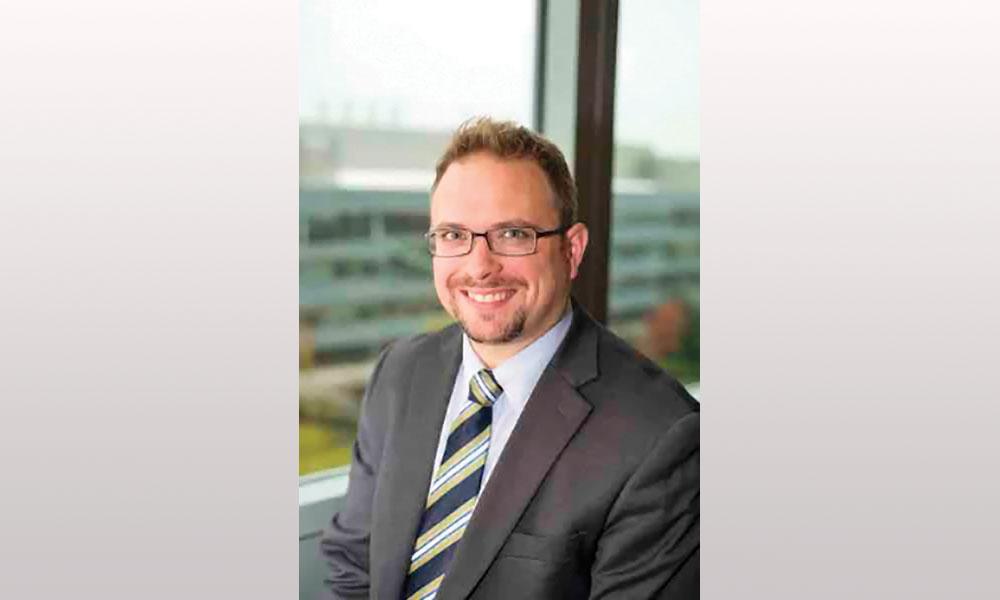
An Interview With a Local Catholic COVID Researcher
Excerpts from an interview with Sterling McPherson
Excerpts from an interview with Sterling McPherson
Sterling McPherson, PhD, is a parishioner at St. Peter Parish in Spokane. He has a unique perspective on the local fight against the coronavirus in eastern Washington as both a scientist and an active parishioner. McPherson answered some questions posed by Father Kyle Ratuiste to provide an inside look at our local response to the coronavirus, and to share his experience as a Catholic researcher in the midst of this fight. He has a background in biostatistics and infectious disease, among other areas of research (including addiction sciences), and is an associate professor at Washington State University.
Father Ratuiste: What was life like for you before the coronavirus?
McPherson: Very, very fortunate. I have lived in Spokane for 10 years. My family enjoys all things outdoors, so Spokane has been a wonderful fit for our family. I have four terrific kids and I’m also lucky enough to work with my wife, Serena, both inside and outside our home. WSU has been a great place to work, especially as the new Elson S. Floyd College of Medicine has emerged. We have tremendous faculty in our college doing research across a broad array of areas, and they are truly helping people throughout Washington and the world live healthier, more productive lives. In short, I am thrilled to personally and professionally be part of several exciting shoots of growth occurring throughout the Spokane region before the pandemic, many of which will continue after the pandemic has passed.
R: How did you become involved in our local coronavirus response?
M: Our dean at the Elson S. Floyd College of Medicine, Dr. John Tomkowiak, contacted me and another faculty member (Dr. Ofer Amram) and asked us to get in touch with Dr. David O’Brien at MultiCare in order to help with modeling hospitalization capacity in our local community. We subsequently met with Drs. Geoff Swanson and Bob Lutz from MultiCare and the Spokane Regional Health District, respectively, in addition to Stephanie Cummings from MultiCare, to begin building an online tool that would be free for all to use and one that would also be useful for short-term local and regional planning in order to help decision-makers.
R: What kind of work did that entail?
M: This quickly became an intense, iterative process. Members of our team from WSU, MultiCare and the Spokane Regional Health District would meet daily, sometimes multiple times a day, for several weeks in late March and early April to build this online modeling tool. Once we had a solid draft of the tool that was user friendly to input one’s local data into (e.g., local doubling rates of disease, hospitalization rates, hospitalization capacity, etc.), mathematically and graphically correct, we presented this tool to a group of public health officials at the Spokane Regional Health District. We subsequently began to submit reports on a daily basis to the health district and others members within our community to prepare for a surge of SARS-CoV-2 (i.e., COVID-19) hospitalized patients. We did this for several weeks until roughly the end of April to continue to monitor the situation. Our work subsided near the end of April, as the cases in our community steadily decreased. We are now preparing our work for peer-reviewed, scientific publication.
R: What were your impressions as you began to learn about the virus?
M: Like many in our community, the quickly mounting number of deaths in our state was very alarming. The mortality rate was unclear, but it was clear that this disease had the ability to spread rapidly. This, combined with the clear lack of testing early on, appeared to be a very problematic combination because it generated so much uncertainty in our local, regional, state and national response. During the early part of this process, there were several days that were frightening because of the rapid increase in cases over a short period of time.
R: Can you give a sense of how bad things were shaping up to be during that time?
M: There was a week or two-week period where it appeared that we could be hitting capacity in the next two to three weeks, based on our projections. I think for several people, both on our team and beyond, there was increasing concern about how our community would handle this surge. In other words, would people either die or have severe, lifelong complications as a result of their less-than optimal care in our system, simply because our community did not have adequate resources? Such would be a very, very sad situation for our entire community.
R: We often hear comparisons between COVID-19 and the cold or flu. Based on the data that you see and interpret, how would you compare these diseases?
M: I’m not sure how useful a direct comparison is for understanding this disease. For example, the spread of this disease has demonstrated itself to be much more rapid than either the cold or the flu. As a result, this significantly increased rate of spread means more people affected, more people affected means more people who experience the most severe symptoms, and the more deaths will occur. While our community has not been hit as hard as many other cities that are as large or larger, we should still take their experiences as a cautionary note. There are many, many easy-to-implement strategies that can make all the difference. For example, mask wearing, frequent handwashing, etc. I realize that these may seem inconvenient and maybe even unnecessary because our community has not been as affected as many other communities, but the idea is to ensure that it never does hit our community as hard because we are a responsible, thoughtful, compassionate, and empathetic community concerned with the health and welfare of others.



